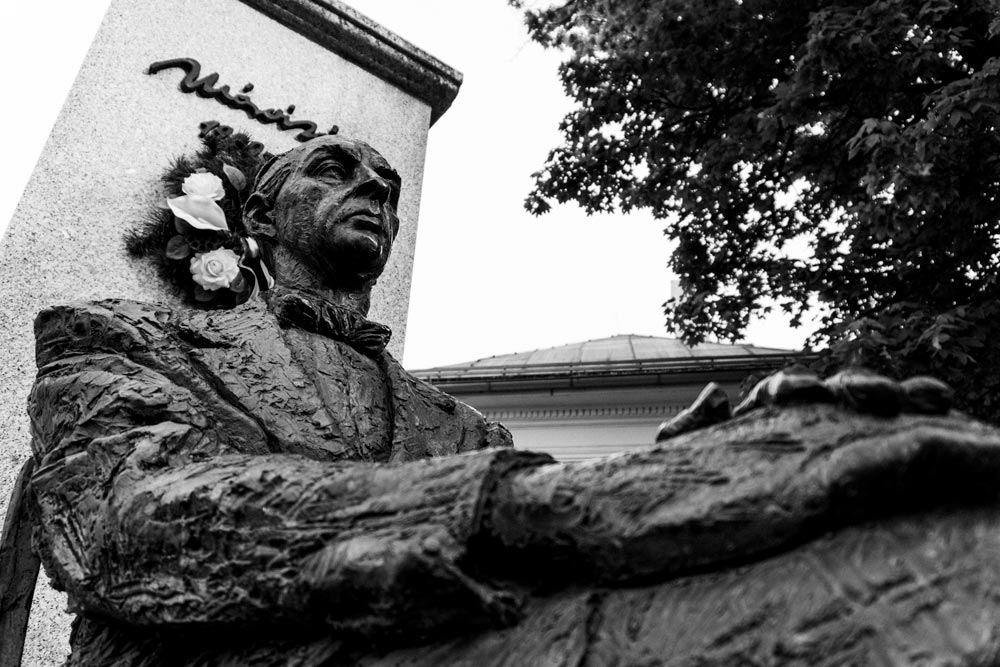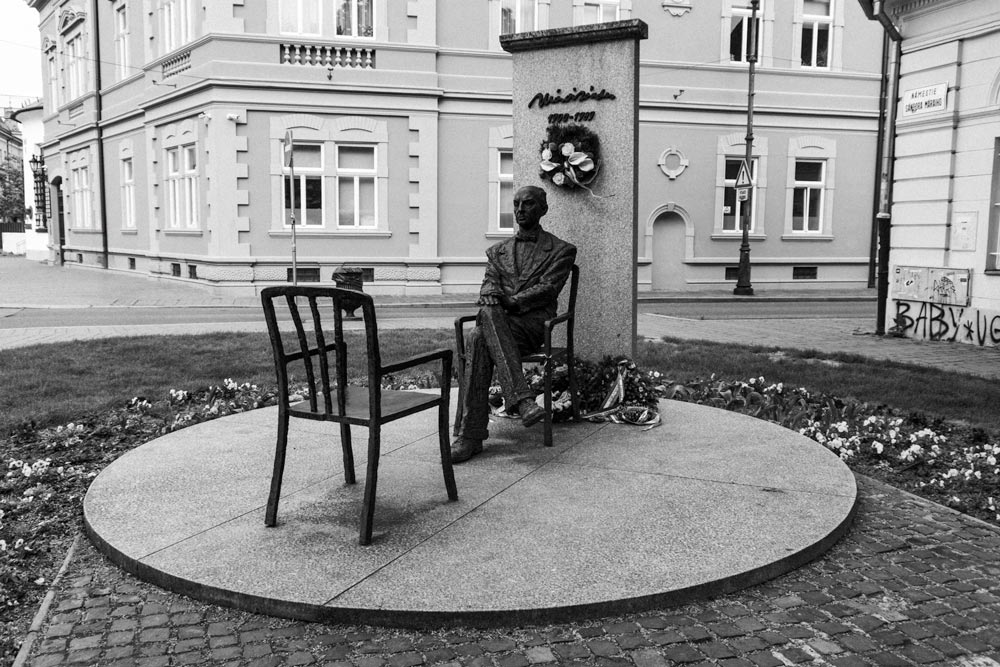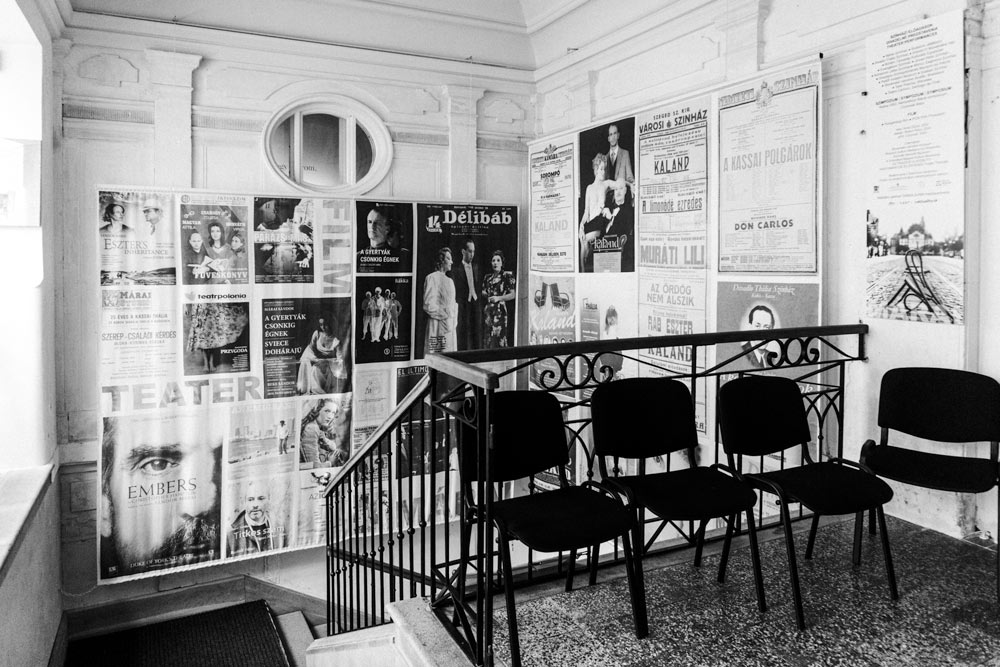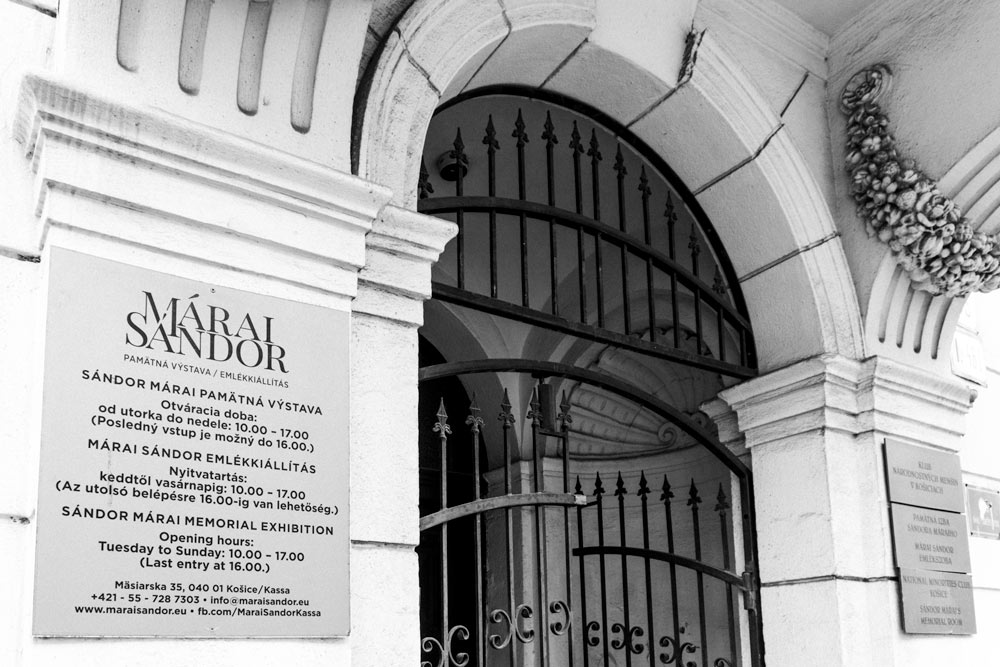If you visit the eastern part of Slovakia, you may find yourself in Košice, the second-largest city. While strolling the streets, you may come across a sitting man with an empty chair. The statue depicts Sándor Márai, or Alexander Márai, who was born in 1900 in Košice.
Márai was a famous writer, poet, and journalist. He died in exile in 1989 in San Diego, United States. One might also say there is some controversy connected to his legacy.

Connection to Košice
Sándor was born to a well-off, culturally refined, and bourgeois family. At his birth, the city was called Kassa and belonged to Hungary. His father was a lawyer and city counselor. Thanks to him, he got access to education, books, music, and civic life. His upbringing strongly supported his sense of class, tradition, and social change.
He is usually presented as a humanist and lover of Košice city. The latter is true. He considered Košice to be an excellent and noble city. During the early 20th century, the town was multiethnic and full of Hungarians, Slovaks, Germans, and Jews. The architecture, street signs, language use, and café culture actively reflected this diversity.
In the book, the author often depicts the disintegration of this multiethnic world, especially after WWI.

Some other themes he covers include memory, identity, exile, and loss. Even when he left Košice, he tried to re-establish a similar life in a different part of the world. He also wrote about the city often with melancholy and affection. To him, the city represented a symbol of a lost Europe.
Disillusioned with communism and nationalism, he left the city in the 1940s. He lived briefly in Germany, Italy, and the United States. But even in exile, he still discussed Košice as a symbolic home, for example, in his Memoir of Hungary or Land, Land!
The above lines have already released the Hungarian identity controversy of Márai that post-communist Slovakia started to re-embrace. According to available information and ideas presented in his works, he considered Slavs to be some sort of threat.
He dreamt about Big Hungary, and many of his provocative ideas about the history of the Kingdom of Hungary are present in the book Land, Land! He even claims, “In Košice, people never spoke Slovak,” that “not a single Slovak word stuck to me.” According to his works, the Slovak influence in Košice was relatively weak. However, there are a couple of anti-claims, according to which the Slovak language was also present and used by many people when they lived there.


Places in Košice Linked to Márai
Besides the statue on Zbrojničná, there is a nearby Sándor Márai exhibition on Mäsiarska Street, and also a secondary school with his name on Kuzmányho Street. There is even a restaurant with his name near the singing fountain on Hlavná Street. There are many places in the city that the author visited frequently. One was the Carpano winery on Hlavná Street 24 (now closed).
The Sándor Márai Exhibition on Mäsiarska Street 35 has been open since 2019. The exhibition consists of several rooms representing different periods in the author’s life. Each showcases many memorabilia (photos, paintings, personal objects, etc.) from his personal life and many citations from his books about his love for Košice, travelling, writing, friendship, and his later life in exile.
It starts in Košice, his hometown, and continues to the room full of reminiscences of his early life and family. The next room is dedicated to his early adulthood, during which he spent considerable time in the house that now hosts the exhibition. The next room is about Budapest, where he lived for a few years. During that time, he slowly transformed into a “real” writer, journalist, and famous author. It was the most productive period of his life.
The last room is about his emigration—he realized that in order to write freely, he needed to relocate with his family to a foreign country.
In his later years, as illness took its toll and those closest to him were gone, he chose to end his life with a gunshot.
The exhibition also includes interactive elements and excerpts from films about his life and work.
The exhibition is open Tuesday through Sunday from 10 AM to 5 PM (the last entrance is before 4 PM). The entrance fee is 6 EUR for one adult.
Sources:
https://sho.sk/sandor-marai-sovinista-ktory-velebil-madarsku-okupaciu-kosic/
https://www.maraisandor.eu/
Sources: